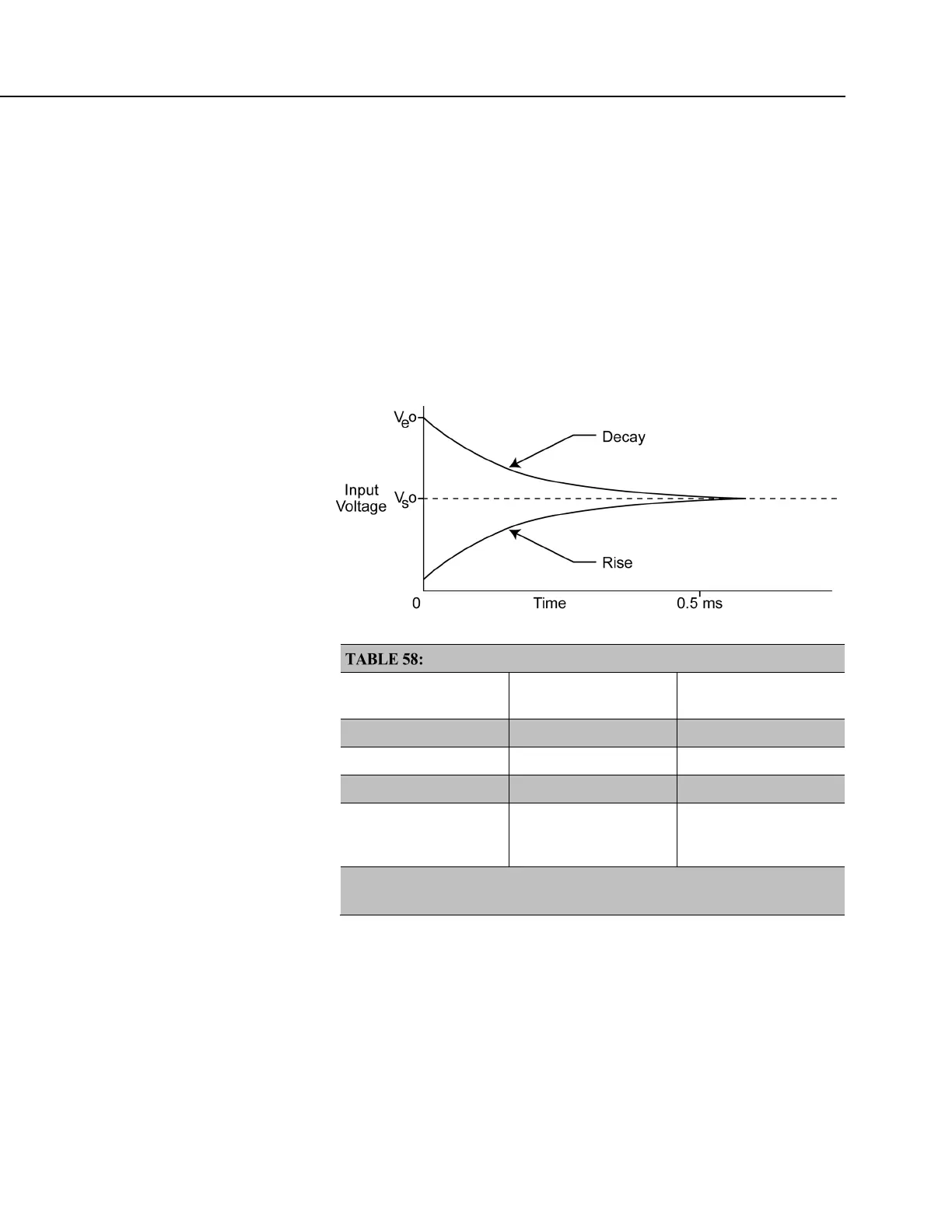Section 8. Operation
Programmed settling time is a function of arguments placed in the SettlingTime
and Integ parameters of a measurement instruction. Argument combinations and
resulting settling times are listed in table CRBasic Measurement Settling Times
(p.
319).
Default settling times (those resulting when SettlingTime = 0) provide
sufficient settling in most cases. Additional settling time is often programmed
when measuring high-resistance (high-impedance) sensors or when sensors
connect to the input terminals by long leads.
Measurement time of a given instruction increases with increasing settling time.
For example, a 1 ms increase in settling time for a bridge instruction with input
reversal and excitation reversal results in a 4 ms increase in time for the CR800 to
perform the instruction.
FIGURE 75: Input voltage rise and transient decay
CRBasic Measurement Settling Times
SettlingTime
Argument
Integ
Argument
Resultant
Settling Time
1
0 250
450 µs
0 _50Hz
3 ms
0 _60Hz
3 ms
integer ≥ 100 integer
μs entered in
SettlingTime
argument
1
450 µs is the minimum settling time required to meet CR800 resolution
specifications.
Settling Errors
When sensors require long lead lengths, use the following general practices to
minimize settling errors:
• Do not use wire with PVC-insulated conductors. PVC has a high
dielectric constant, which extends input settling time.

